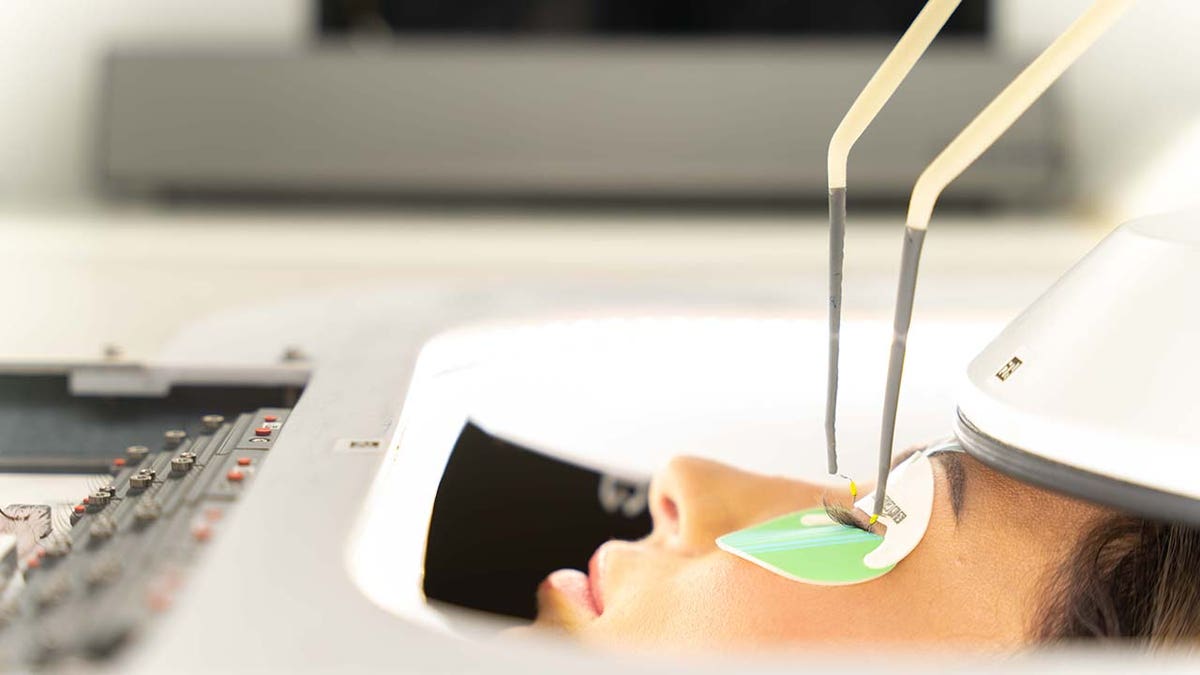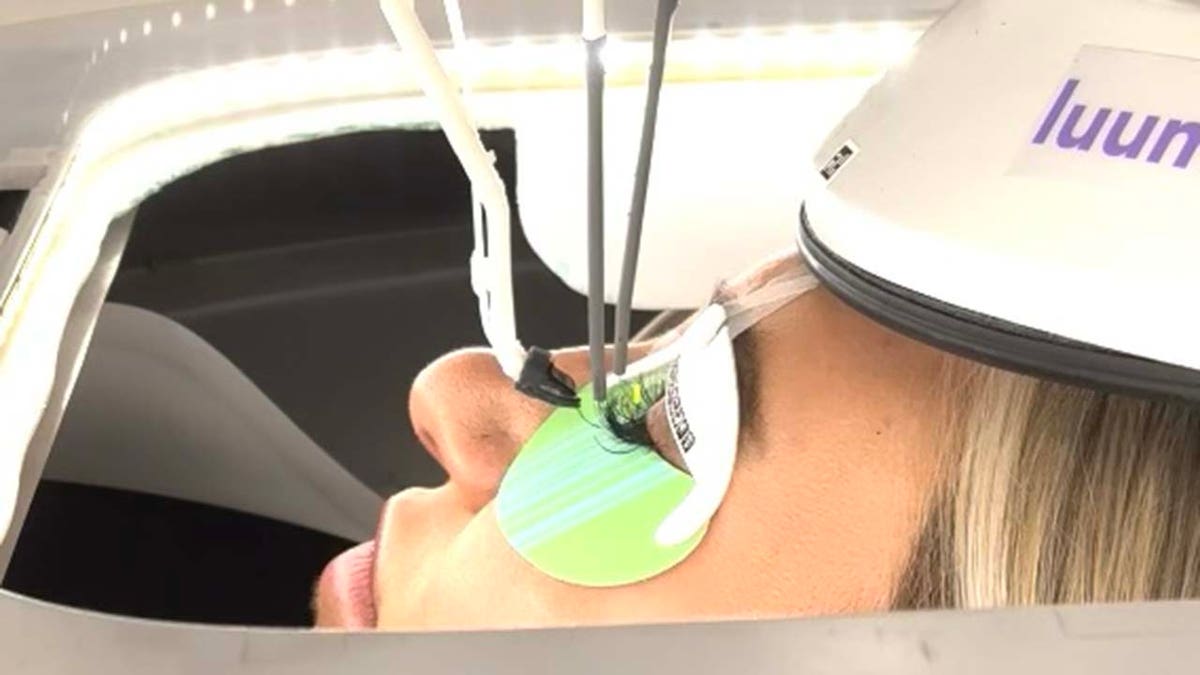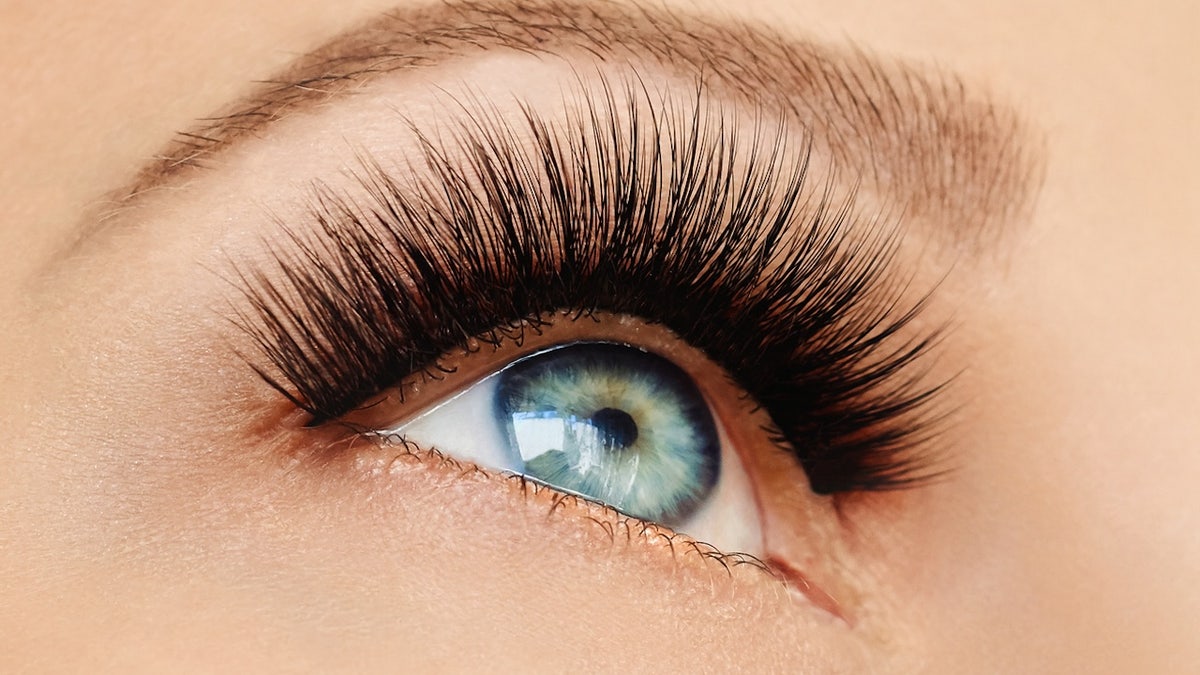AI eyelash extension robot gives beauty industry a boost
Luum CEO Nathan Harding and President Jo Lawson discuss the new technology, which uses artificial intelligence to place fake lashes.
Artificial intelligence is making its way into esthetics with a new application in eyelash extensions.
A Bay Area-based company called Luum has released an AI-powered eyelash extension machine, currently available at only a few select California locations.
Nathan Harding, CEO and co-founder of Luum, who is based in Oakland, California, told Fox News Digital in an interview that the company is using robotics and AI to "completely transform the experience of eyelash extensions."
WHAT IS ARTIFICIAL INTELLIGENCE?
"For the client, it's going to be super fast, super comfortable and super consistent," he said.
"And the provider will be able to do three times the appointments they could do otherwise."

The president of Luum compared the gentle feeling of the company's eyelash probes to "butterfly kisses." (Luum)
Salon owners and lash technicians will be able to "concentrate on the artistry part of it," rather than the "backbreaking, tedious labor," Harding said.
A typical Luum appointment starts with choosing lash length, density, volume and shape, president Jo Lawson told Fox News Digital in the same interview.
GOOGLE BARD TRANSITIONS TO GEMINI: WHAT TO KNOW ABOUT THE AI UPGRADE
After separating the client’s lashes, the lash artist will position the client in a "super comfortable chair" and slide the person into the Luum machine.
"Your eyes are taped closed, and they slide you in, position you correctly [and] set the machine to do the job," Lawson said.
The machine typically places 50 to 60 lashes on each eye unless the client has requested more density during a consultation.

"It's so unique that this robot that looks almost like a little guy ... is looking at you and placing these lashes," Lawson said. (Luum)
Once Luum is finished with the placement, the lash artist will touch up the robot’s work by manually adding a few lashes at the end.
A full set of lashes via Luum takes about an hour and 15 minutes to complete, while a refill takes about 50 minutes — about 30% faster than it would if a human had placed them.
HEAD OF GOOGLE BARD BELIEVES AI CAN HELP IMPROVE COMMUNICATION AND COMPASSION: ‘REALLY REMARKABLE’
The beauty store Ulta currently charges $170 for a full Luum set and $80 for a refill, comparatively cheaper than other extension services.
Luum right now has one machine running at Ulta’s South San Jose location, where it is "almost completely booked every single day," according to Lawson.
The company's goal is to have Luum machines at every Ulta in the country.

This infographic from the company details how Luum's AI eyelash machine works. (Luum)
Luum is currently working on an advanced machine that will work four times faster than a human, Harding pointed out.
The upgraded machine will address both eyes at the same time, as the current model does one eye at a time, Lawson added.
How the AI works
Lawson described the Luum lash machine as a "fun thing" to experience, even for people who aren't tech-savvy.
"There's nobody leaning on your forehead with these super sharp instruments, literally a millimeter from your eyeball," she said.
"So, it just feels safer, it feels cleaner, it's faster and the clients are loving it."
ARTIFICIAL INTELLIGENCE EXPERTS SHARE 6 OF THE BIGGEST AI INNOVATIONS OF 2023: 'A LANDMARK YEAR'
While it might seem that having a robot so close to the eye could be dangerous, Harding said it's "purely mechanical."
"The only thing that [the machine] could physically reach you with are these little featherweight tools," he said.
"We need to know where your upper eyelid is very accurately, and neural networks do those kinds of tasks fantastically."
"And we engineer those tools so that, unlike in the human process, they have very springy little tips, and then we also attach those tools to the robot, so... if you just hit it with your finger, it falls off."
Harding detailed that if a client were to "suddenly sneeze" or thrust their head towards the tool, the tips would fall off.
"And [then] we put on clean ones and keep going," he said. "So, that's the worst thing that can happen. And once people see that, they're like, 'Oh, I'm comfortable.'"
Luum incorporates the "old-school classical techniques" of computer vision, which are still "very sophisticated" but not to the level of modern-day machine learning, and then combines it with artificial intelligence technology, according to Harding.

Luum machines come with a "super comfortable" chair for clients to sit back and relax, the company's president said. (Luum)
"And then we use the machine … to create a lot of data, tons and tons of images, and then we can use those images to train neural networks to do certain things … like finding the edge of your upper eyelid," he said.
"We need to know where your upper eyelid is very accurately, and neural networks do those kinds of tasks fantastically."
AI DEFINES ‘IDEAL BODY TYPE’ PER SOCIAL MEDIA – HERE'S WHAT IT LOOKS LIKE
The neural networks can tell the machine whether it’s in good orientation with the eyelid before honing in on a target lash, he said.
"The neural network will make the decision on the best place to put this little probe the next time so that it's most likely to isolate a lash," said Harding.
Future of AI and beauty
Luum is patented in 48 countries, with customers already pre-ordering the machines for their salons.
The machine is currently sold to a salon for $129,000, with $62,000 of that going toward shipping, installation and training, according to the company.
CHATGPT LIFE HACKS: HOW USERS ARE SPAWNING GROCERY LISTS FROM AI-GENERATED RECIPES AND MEAL PLANS
"It's in our best interest to make sure that we cue our customers up, get them trained well and have them in a situation where they're making money while we're making money," Lawson said.
"This machine only gets more valuable over time."

Luum currently has one machine running at Ulta’s South San Jose location, where it is almost completely booked daily, the company says. (Luum)
"[Technicians] can raise their productivity greatly – and that means there's going to be greater income for them, and also that the physically demanding jobs are going to get easier."
TEENS ARE TURNING TO SNAPCHAT'S 'MY AI' FOR MENTAL HEALTH SUPPORT — WHICH DOCTORS WARN AGAINST
This kind of AI application eventually could extend into other services, such as hair removal, semi-permanent tattooing of eyebrows, spray tanning, tattooing and makeup, Harding said.
Finding a robot that can leverage AI and learn over time is "really where the value is," according to Lawson.

Luum is "exactly the kind of robot application I love, where you're not replacing someone," the CEO said. (Luum)
Harding responded that it's "exactly the kind of robot application I love, where you're not replacing someone."
He added, "You're taking a very valuable, high-revenue, high-margin person, and you're [tripling] the revenue they can do. That's where robotics really makes huge leaps."
Potential risks and limitations
Harvey Castro, an emergency medicine physician in Coppell, Texas, is also a consultant and speaker on AI and ChatGPT in health care.
He's not affiliated with Luum but offered his input on potential safety concerns and considerations.
CLICK HERE TO SIGN UP FOR OUR LIFESTYLE NEWSLETTER
"The device's proximity to the sensitive eye area could raise concerns about the risk of eye infections or allergic reactions to the materials used in the lash extensions," Castro told Fox News Digital.

"Ensuring that the system can maintain a sterile environment and that the materials used are hypoallergenic and safe for close contact with the eye area is crucial," an AI expert said. (iStock)
"Ensuring that the system can maintain a sterile environment and that the materials used are hypoallergenic and safe for close contact with the eye area is crucial."
While robotics and computer vision promise high precision, he noted, there's always a concern about the margin of error — "especially in a procedure as delicate as lash extensions, where slight misplacements could lead to discomfort or injury."
"Thorough evaluation and transparency regarding safety, efficacy and regulatory compliance are essential."
Training and oversight of technicians is another area of concern, Castro noted.
"Ensuring that operators are well-versed in both the technology and emergency procedures in case of malfunction or adverse reactions is essential for client safety," he said.
CLICK HERE TO GET THE FOX NEWS APP
Given the novel nature of this technology, Castro said the long-term effects of its repeated use on eye health are unknown.
"While this lash system represents an innovative step forward in beauty technology, thorough evaluation and transparency regarding its safety, efficacy and regulatory compliance are essential to addressing potential concerns from a medical standpoint," he added.
For more Lifestyle articles, visit www.foxnews.com/lifestyle.


























